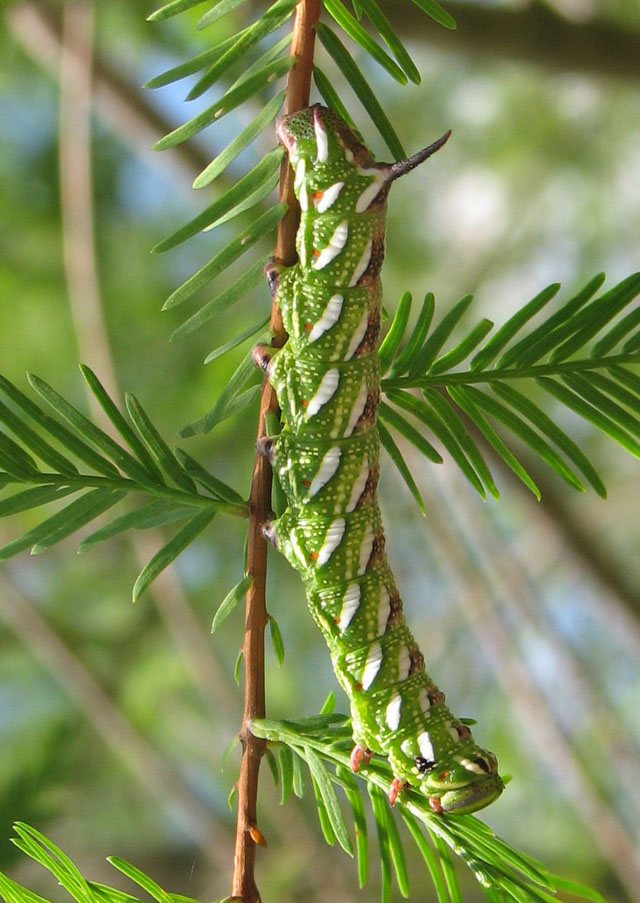Isoparce cupressi
eye-soh-PAR-kehm
koo-PRESS-eye
Cypress or Baldcypress Sphinx
(Boisduval, [1875]) Sphinx cupressi

Isoparce cupressi male, Louisiana, courtesy of Vernon A. Brou.
This site has been created by
Bill Oehlke at oehlkew@islandtelecom.com
Comments, suggestions and/or additional information are welcomed by Bill.
TAXONOMY:
Family: Sphingidae, Latreille, 1802
Subfamily: Sphinginae, Latreille, [1802]
Tribe: Sphingini, Latreille, 1802
Genus: Isoparce Rothschild & Jordan, 1903 ...........
Species: cupressi Boisduval, [1875]
|
MIDI MUSIC
.....It's a Wonderful World.....
copyright C. Odenkirk
ON.OFF
<bgsound src="world.mid" LOOP=FOREVER>
|
DISTRIBUTION:
Isoparce cupressi, the rare Cypress Sphinx
(Wing span: 2 3/8 - 2 9/16 inches (6 - 6.5 cm)),
flies in Cypress swamps in Georgia (specimen type locality), and from
Maryland to Texas. It has been reported in Mexico.
This species is threatened due to destruction of habitat.
The upperside of the forewing is gray with two longitudinal broken
black dashes. The lower dash, with a patch of orange-brown
above it, is thicker and is located near the anal angle.
The upper broken dash is near the apex.
The upperside of the hindwing is dark gray.

Isoparce cupressi, July 18, Bon Secour, Alabama,
courtesy of Dirk Bayer.
The outer wing fringes are checkered with white to yellowish gray and black.
FLIGHT TIMES:
Isoparce cupressi adults fly as at least four broods in Louisiana, from
February-October.
ECLOSION:
Pupae probably wiggle to surface from subterranean chambers just prior to eclosion.

Isoparce cupressi female, Louisiana, courtesy of Vernon A. Brou.
SCENTING AND MATING:
Females call in the males with a pheromone released from a gland at the tip of the
abdomen. The short-tongued adults probably do not feed.
EGGS, LARVAE, PUPAE:
Eggs are deposited singly,
scattered on the underside of baldcypress (Taxodium distichum)
needles.
Larvae feed on the needles at night and pupate in shallow
underground burrows where the second generation
overwinters.

Isoparce cupressi, Louisiana, courtesy of
Vernon Brou.

Isoparce cupressi, southern Florida, July 4, 2007, courtesy
of Pat Dietrich.
Return to Sphingidae Index
Return to Sphingini Tribe




